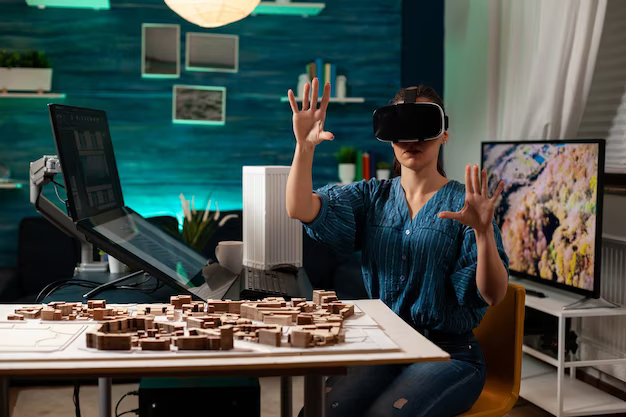Creating a captivating game world is a fundamental aspect of game development. As technology advances, game designers and developers have access to advanced methods and techniques that elevate the level of immersion and realism in virtual environments. In this article, we will explore advanced methods of creating a game world that go beyond the basics, including procedural generation, photogrammetry, dynamic weather systems, artificial intelligence integration, and virtual reality implementation. These techniques push the boundaries of game world creation, offering new avenues for creativity, player engagement, and innovative gameplay experiences.
Procedural Generation: Crafting Endless Possibilities
Procedural generation is a powerful technique that allows developers to generate vast and diverse game worlds automatically. By utilizing algorithms and rule sets, game developers can create environments, landscapes, and even entire civilizations that are unique and dynamic for each playthrough. Procedural generation provides scalability and replayability, ensuring that players always encounter new experiences. It is particularly useful for open-world games and exploration-focused titles. The flexibility of procedural generation allows for the creation of intricate landscapes, complex dungeons, and even branching narrative paths that adapt to player choices.
Photogrammetry: Bringing Real-World Details into the Game
Photogrammetry is a cutting-edge technique that involves capturing real-world objects and environments through photographs and converting them into highly detailed 3D models. By taking a series of photographs from different angles, specialized software can reconstruct the geometry and textures of objects with remarkable accuracy. This method allows developers to incorporate real-world objects, landscapes, and architectural wonders into their game worlds, resulting in an unprecedented level of realism and authenticity. Photogrammetry can be utilized to recreate historical landmarks, natural landscapes, and even everyday objects, making the game world feel incredibly lifelike.
Dynamic Weather Systems: Evoking Atmosphere and Immersion
Dynamic weather systems simulate realistic weather conditions that change dynamically within a game world. By integrating advanced weather algorithms, developers can create immersive experiences where players witness rain, snow, fog, or even storms in real-time. These dynamic weather systems affect gameplay, visuals, and player interactions, adding depth and realism to the game world. From altering visibility to influencing AI behaviors, dynamic weather systems create a living and breathing virtual environment. The implementation of dynamic weather systems can also introduce strategic elements, such as the need to adapt to changing weather conditions or leverage weather effects to gain an advantage.
Artificial Intelligence Integration
Breathing Life into NPCs and the Game World Artificial intelligence (AI) integration plays a pivotal role in creating believable non-player characters (NPCs) and shaping the behavior and interactions within the game world. Advanced AI algorithms enable NPCs to exhibit realistic and adaptive behaviors, including decision-making, pathfinding, and even emotional responses. AI-driven systems can simulate complex ecosystems, populate cities with diverse individuals, and create dynamic relationships between characters, leading to a more immersive and engaging game world. The integration of AI can result in realistic enemy behaviors, dynamic social interactions, and responsive virtual ecosystems that make the game world feel alive and dynamic.
Virtual Reality Implementation
Immersion Beyond the Screen Virtual reality (VR) has emerged as a revolutionary technology that allows players to immerse themselves fully in the game world. By integrating VR support, developers can create game worlds that players can explore and interact with in a more intuitive and immersive manner. VR enables players to physically move through the virtual environment, interact with objects using hand controllers, and experience a heightened sense of presence. From architectural visualizations to action-packed adventures, the implementation of VR technology provides a new level of immersion and realism, taking game world creation to new heights.
Conclusion
Advanced methods of creating a game world offer game developers unprecedented opportunities to push the boundaries of creativity and immersion. Procedural generation enables endless possibilities and replayability, while photogrammetry brings real-world details into virtual environments with astonishing accuracy. Dynamic weather systems add atmosphere and realism, and AI integration breathes life into NPCs and interactions. By embracing these advanced techniques, developers can create game worlds that captivate players, leaving a lasting impression and delivering unforgettable experiences. The future of game world creation is an exciting realm of innovation and limitless possibilities.
